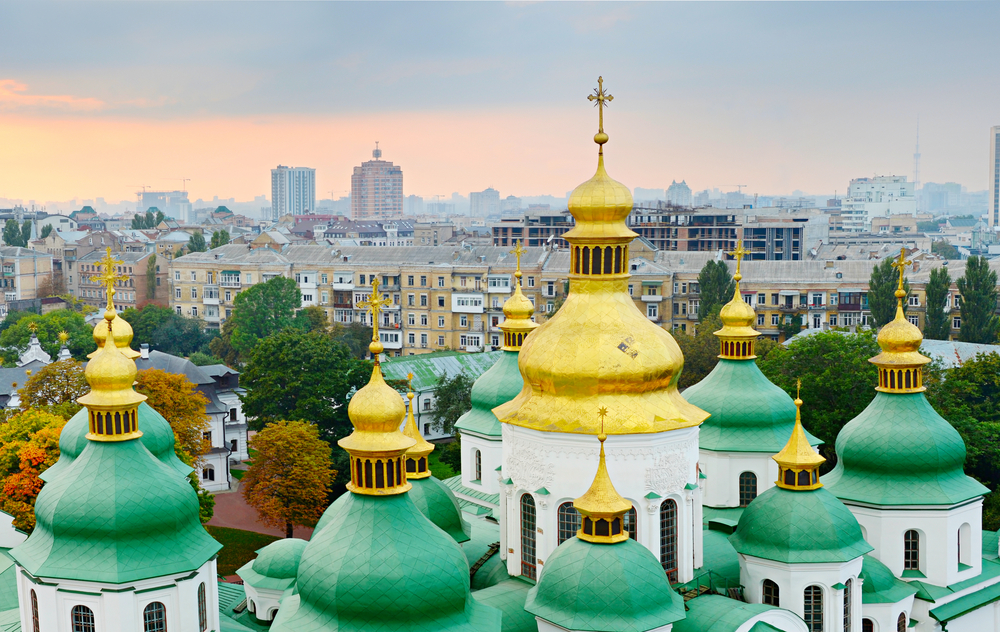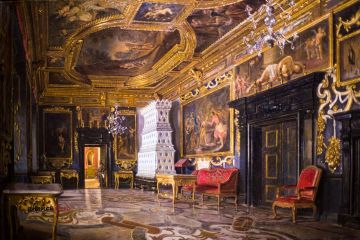The Cathedral was named after the biggest Orthodox Christian cathedral of the time - Constantinople St. Sophia Cathedral (Hagia Sophia Temple currently a Mosque in Istanbul). This majestic 13-cupola sanctuary adjoined Yaroslav’s Palace and became a holy place of worship for Kiev dwellers as well as an international political and cultural center.
The interior is the most astounding aspect of Saint Sophia Cathedral in Kiev. Many of the mosaics and frescoes are original, dating back to 1017–31, when the cathedral was built to celebrate Prince Yaroslav's victory in protecting Kiev from nomadic tribes. Each mosaic and fresco had its allotted position according to Byzantine decorative schemes, turning the church into a giant 3D symbol of the Orthodox world order. There are explanations in English of individual mosaics, but the one that immediately strikes you is the 6m-high Virgin Oranta dominating the central apse. The Virgin Oranta is a peculiarly Orthodox concept of the Virgin as a symbol of the earthly church interceding for the salvation of humanity. Having survived this long, this particular Oranta is now thought indestructible by Orthodox believers.
Read: St. Nicholas Cathedral in Kyiv

While equally attractive, the building's gold domes and 76m-tall bell tower are 18th-century baroque additions. St. Sophia Byzantine architecture announced the new religious and political authority of Kiev. It was a center of learning and culture, housing the first school and library in Kyivan Rus.
For many years St. Sofia Cathedral served as a burial place for Kyivan Rus’ princes. The remains of Yaroslav Mudry, his son Vsevolod, and Vladimir Monomakh are buried inside cathedral’s crypt.

Read: Attractions in Kyiv
Monastic buildings constructed in the 17th and 18th centuries in the Ukrainian Baroque style surround the cathedral. The architectural ensemble includes the bell tower, Metropolitan’s house, the refectory, the Zaborovsky gate, the south entrance tower, the cells of cathedral elders and the seminary encircled by a stone wall. Over the centuries, the cathedral and monastic buildings have expressed a unique harmony of architectural and natural forms, and national spirit and have held a significant place in the traditional historic landscape of Kiev.
Photo source: shutterstock.com







